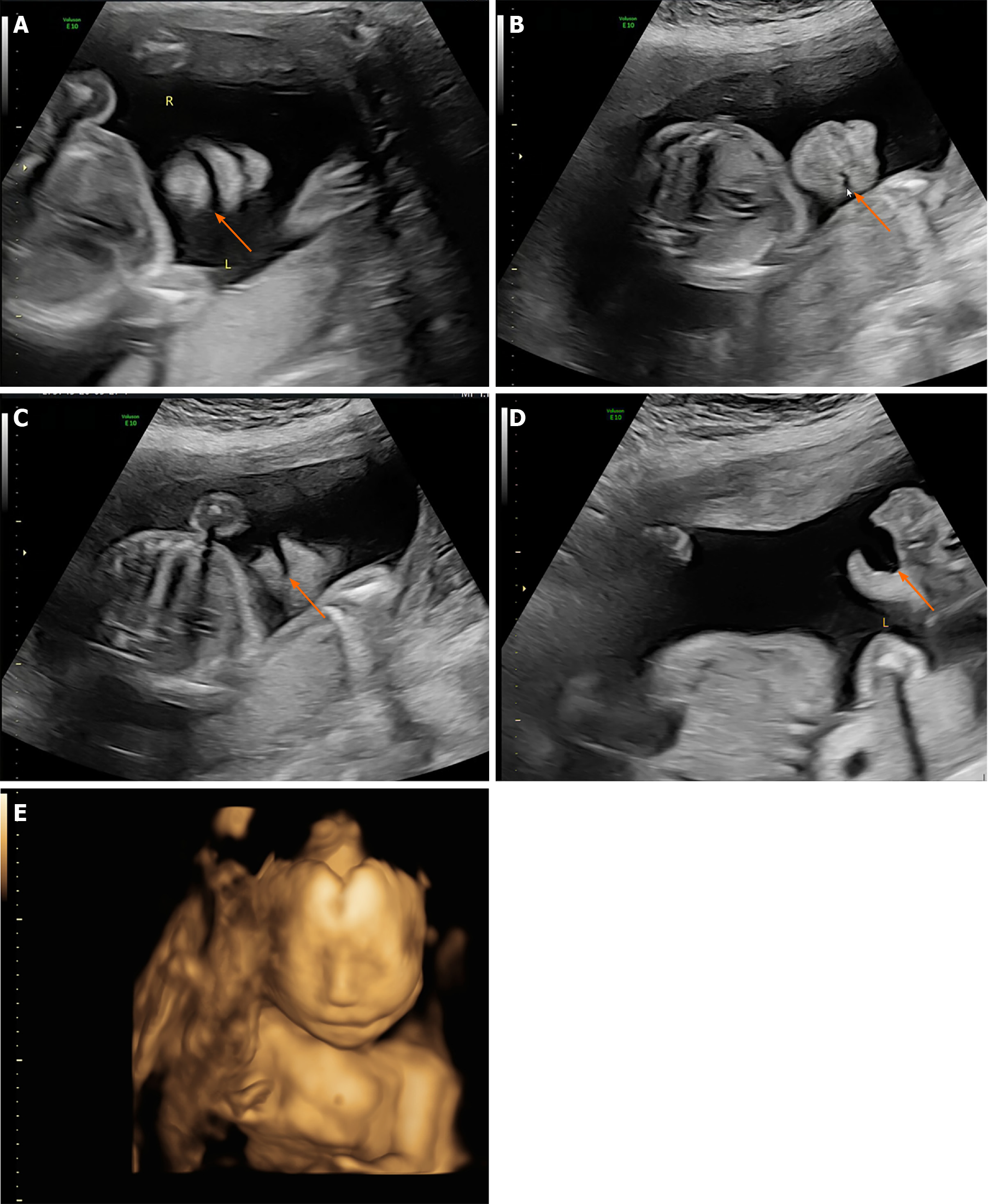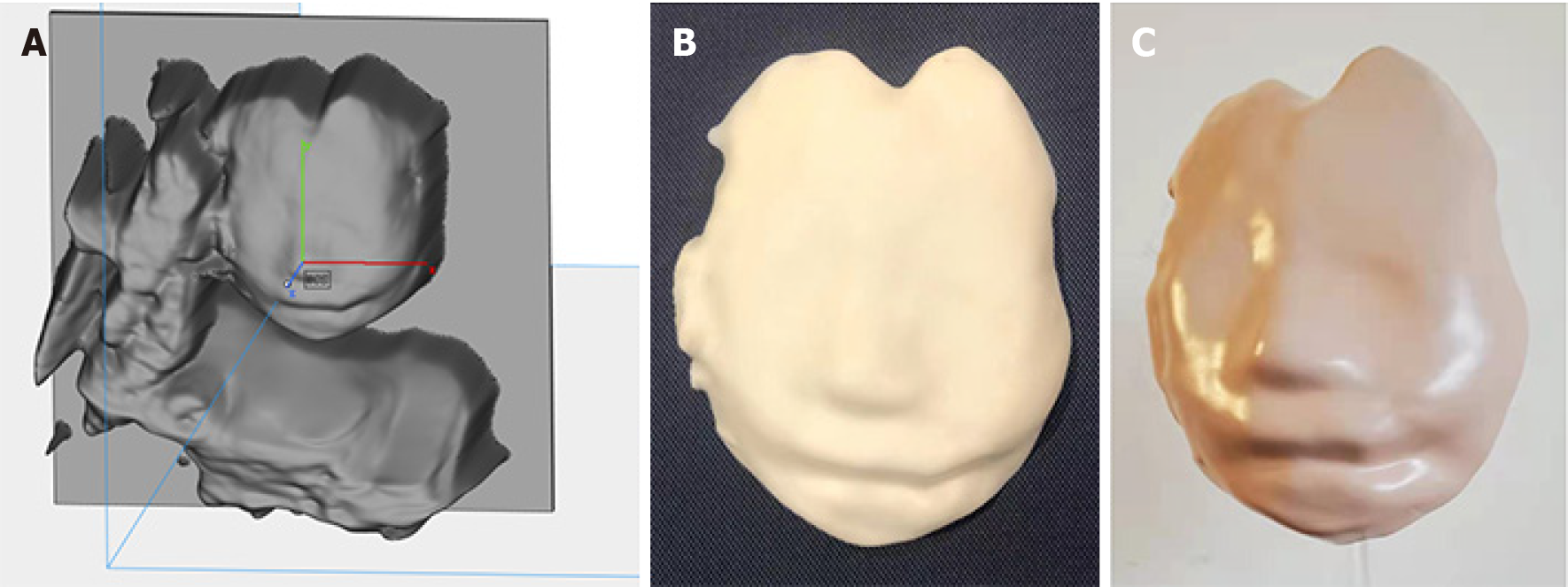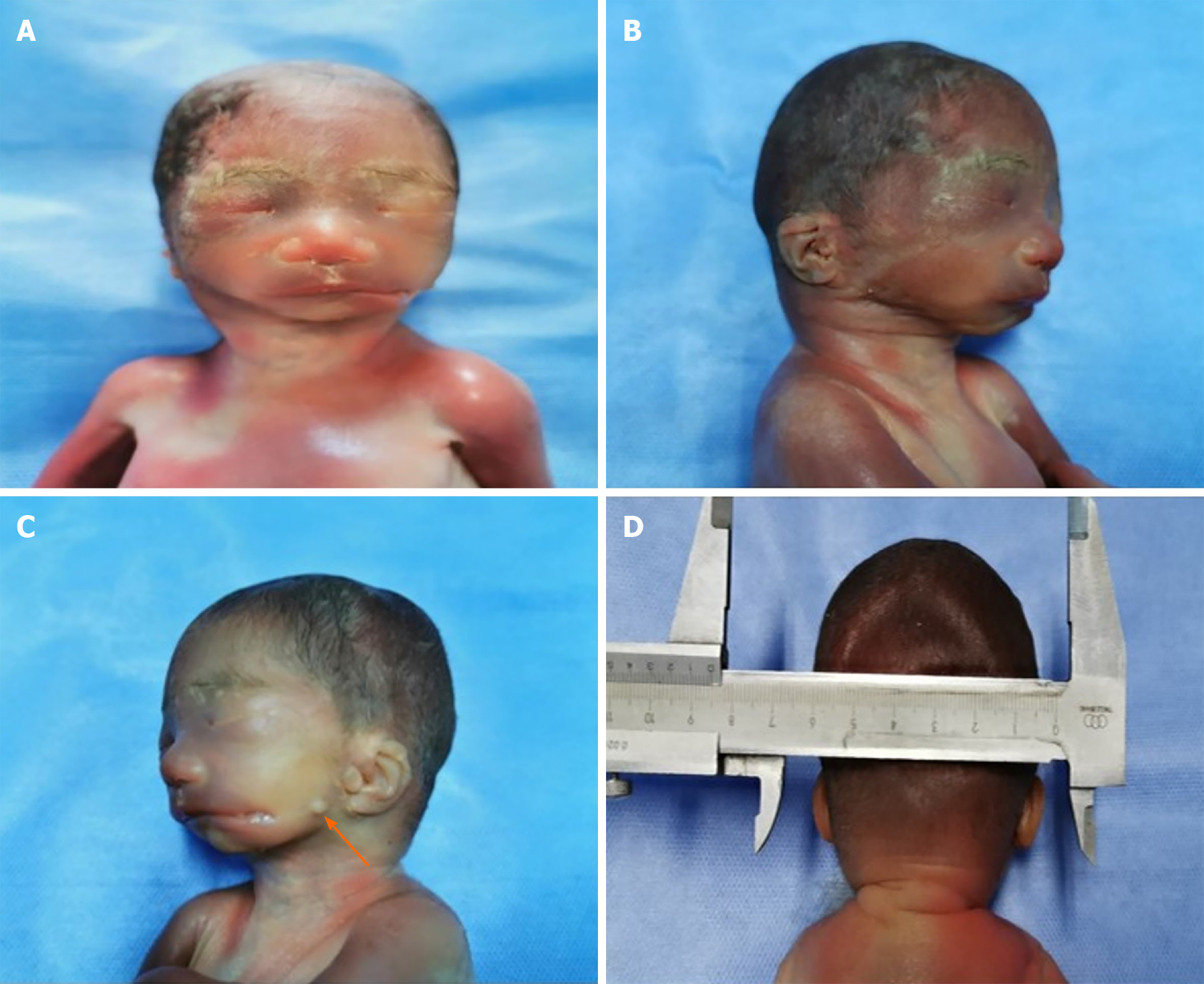Copyright
©The Author(s) 2021.
World J Clin Cases. Aug 26, 2021; 9(24): 7196-7204
Published online Aug 26, 2021. doi: 10.12998/wjcc.v9.i24.7196
Published online Aug 26, 2021. doi: 10.12998/wjcc.v9.i24.7196
Figure 1 Ultrasonographic findings of the patient.
A and B: In the nostril-lip coronal plane of two-dimensional ultrasonography, asymmetry of the oral commissures was revealed, and left commissure widening was identified (arrow); C and D: In the left oblique-coronal section, a cleft at the left oral commissure was detected, which extended to the left cheek, and enlarged with mouth movements (arrow); E: In the surface rendering mode of three-dimensional ultrasonography, the result showed left lateral facial cleft, extending from the left oral commissure to the left cheek.
Figure 2 The creation of three-dimensional-printed models of the fetus' face.
A: The output file of the standard tessellation language software was created based on the data acquired from three-dimensional (3D) ultrasound; B and C: The 3D-printed model of the fetus' face shows the left lateral facial cleft, which can be observed in several angles.
Figure 3 Pathological examination findings.
A: In the frontal view, the cleft extends from the left oral commissure to the left cheek; B and C: In the lateral view, the right face is normal, the lateral facial cleft on the left face extends to the left cheek, and a skin tag is identified anterior to the left external ear, which was not detected on ultrasonography (arrow); D: The posterior view is unremarkable. After parental counseling, the parents made an informed choice to terminate the pregnancy.
- Citation: Song WL, Ma HO, Nan Y, Li YJ, Qi N, Zhang LY, Xu X, Wang YY. Prenatal diagnosis of isolated lateral facial cleft by ultrasonography and three-dimensional printing: A case report. World J Clin Cases 2021; 9(24): 7196-7204
- URL: https://www.wjgnet.com/2307-8960/full/v9/i24/7196.htm
- DOI: https://dx.doi.org/10.12998/wjcc.v9.i24.7196















